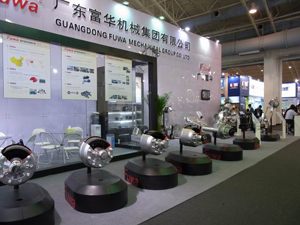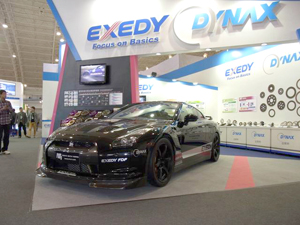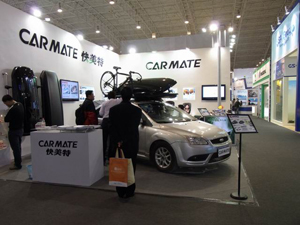Many Auto-Parts Makers in China Rely on M&A to Go Global
Much effort awaits makers to turn out high-tech-content parts
2012/08/29 | By CENSThe auto-parts industry in China has grown rapidly in the past one decade or so, with export value soaring from US$1.63 billion in 2001 to US$52.2 billion in 2011. Auto parts now play a bigger part to generate China's automotive-related revenue, while China-made parts make up for increasingly higher proportions in the global market, from 4.93% in 2008 and 5.23% in 2009, to 5.74% in 2010.

China's Ministry of Commerce (MOF) and other governmental units predict auto parts exports from China to reach an estimated US$85 billion in 2015, growing at compound annual growth rate (CAGR) of about 20%. By 2020 China-made auto parts are expected to account for 10% of the global automotive trade value.
To achieve MOF's mid-term goals seems realistic, because the 2011 figures were very positive. In 2011, China's auto-parts exports exceeded US$50 billion for the first time to hit about US$52.2 billion, up 28.6% from the previous year to account for 75.7% of total automotive product exports from China. Auto-parts exports grew for the second consecutive year in 2011, the first two-consecutive-year increase after 2008, the year of the global financial tsunami.
Some figures also suggest a clear upturn: between 2000 and 2005 auto parts exports saw a CAGR of 54.5%, after which the average annual growth remained at around 30%, except minor dips in 2008 and 2009. Parts exports have made up for more than 70% of China's total automotive product exports in recent years.

Major export markets have changed in the past 11 years, shifting from Africa, the Middle East, Southeast Asia in early years to North America, Western Europe, Japan and South Korea in recent years.
The U.S. and Japan are the top-two markets for China-made auto parts, absorbing 33% and 13%, respectively, of China's auto-parts exports in 2006, during which the top-three export markets for China-made automotive engine parts were the U.S., Canada and Japan.
Going Global Competitively
A group of state-run enterprises with international competitiveness have been leveraging their capacities in certain product categories as wheels, tires, automotive glass, and brake systems and parts, with some major players, backed by product quality, innovation and brand image, having successfully tapped international automakers' original equipment (OE) parts supply chains.
Also some of them have been aggressively developing overseas business deployments to strengthen competitiveness especially after the 2008 global financial tsunami, with many having acquired or planning M&A.
BWI Group of China acquired parts of Delphi; while Wanxiang Group bought the steering-column business of DS of the U.S.. In 2011, CITIC Diecastal Wheel Manufacturing Co., Ltd. acquired German-based casting maker KSM; early this year, Ningbo Huaxing announced to buy the assets and business of Sellner GmbH and IPG Indstrieplast GmbH under Sellner Group of Germany; while in March this year, China North Industries Group Corporation's subsidiaries tied up with other local counterparts to fully acquire Kiekert AG of Germany, a 150-year-old company specializing in automotive door locks.

Product-structure Adjustment
Despite rapid growths, China's major auto exports are mainly energy-intensive and highly polluting traditional items: In 2006 automotive glass, tires, wheels and trailer parts accounted for 54% of China's parts export revenue, contrasted against the 17% generated by items requiring higher technologies as air conditioner parts, electronic gauges, and transmission assemblies.
In the past two years, the export product structure saw some minor changes due to many auto-parts makers trying to adjust product mixture amid increasingly fierce competition. While ever more makers upgrade themselves to produce higher-quality engines and automotive-electronic products, most suppliers still focus on lower-end items as wheels, tires, interior accessories etc.
Of the US$52.2 billion in auto-parts exports in 2011, value of assembled engines totaled US$1.77 billion, up about 80% from the previous year; that of auto parts, accessories and body parts was US$27.1 billion, up 24.6%; while auto and motorcycle tires was US$13.4 billion, up 42.3%.
China-made auto parts are mainly shipped to industrially advanced nations as the U.S., European Union and Japan, but about 80% of such exports are aftermarket items rather than OEM parts for international automakers.
China's auto-parts exports, affected by volatile global economies and declining new-car sales, face slowing growth: In the first four months of 2012, according to statistics compiled by the General Administration of Customs in China, cumulative parts exports value was US$16.9 billion, up 12.3% year-on-year (YoY), with 1.02 million automotive engines exported, down 28.6% and generating export revenue of US$532 million, a 0.4% YoY increase. About US$8.5 billion worth of auto parts, accessories, and body parts were exported, up 6.3% YoY.
Auto-parts from China have been unable to achieve 30% average growths in the past few years, suggesting the whole industry has to adjust export structure and pursue transformation.




